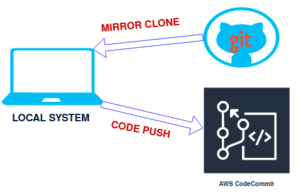How To Use GitHub To Get Your Projects Off The Ground And Running Smoothly
Are you looking for ways to get your projects off the ground and running quickly? Have you heard of GitHub, but don’t know how it can help you? This article is for you! It’ll provide a step-by-step guide on how to use GitHub for effective project management. Learn about its features, advantages, and limitations so that you can make the most of this powerful software.
Introduction to GitHub
GitHub is a project management tool that allows developers to collaborate on code development and track changes to the code base. It also provides a platform for users to share their code with others. GitHub is free for public repositories, but charges for private repositories.
GitHub offers many features that make it a powerful tool for managing projects. The ability to track changes to the code base and see who made what changes is valuable for collaboration and debugging purposes. The issue tracking system keeps track of bugs and feature requests, and the wiki allows users to document their project in more detail.
The most important thing to know about GitHub is that it is a collaborative platform. By using GitHub, developers can work together on projects and share their code with each other. By collaborating on projects, developers can learn from each other and improve their skills.
Benefits of Using GitHub
There are a number of benefits to using GitHub for your projects. Perhaps most importantly, it provides a central location for all project files and information. This can be extremely helpful when working on large or distributed projects. In addition, GitHub also allows for easy collaboration among team members and makes it simple to track changes to project files over time. Finally, GitHub can also be used to host project websites, making it a one-stop shop for all your project needs.
Setting up a GitHub Account
If you’re starting a new project, one of the first things you’ll need to do is set up a GitHub account. GitHub is a code hosting platform that allows developers to collaborate on projects and track changes to their code.
Creating a GitHub account is free and only takes a few minutes. You can sign up for an account at https://github.com/. Once you’ve created your account, you’ll need to create a new repository for your project. A repository is simply a place where your code will be stored.
You can give your repository any name you want, but it’s usually best to choose something that reflects the name of your project. Once you’ve created your repository, you can invite other developers to collaborate with you on your project. Simply go to the Settings tab of your repository and add their username under the Collaborators section.
Now that you’ve set up your GitHub account and repository, it’s time to start coding!
Creating Your First Repository
Creating a repository on GitHub is simple. Just click the “Create a new repository” button on your dashboard. You’ll need to provide a name and description for your repository, and you can optionally choose to make it private or initialize it with a README file. Once you’ve created your repository, you can add files, folders, images, and other assets to it. You can also collaborate with other users on your repositories, making changes and tracking progress together.
Understanding the Different Features of GitHub
GitHub is a powerful tool that can help developers get their projects off the ground quickly and efficiently. However, it can be difficult to understand all of the different features and options that GitHub has to offer. In this article, we will explore some of the most important features of GitHub so that you can better understand how to use it for your own projects.
One of the most important features of GitHub is its ability to track changes to files. This means that you can easily see who made what change and when, which can be very helpful when trying to debug code or track down bugs. GitHub also makes it easy to work with other developers by allowing you to fork repositories and submit pull requests.
Another great feature of GitHub is its issue tracking system. This allows you to keep track of all the different tasks that need to be completed for your project, as well as who is responsible for each task. This can be extremely helpful for coordinating large projects with multiple developers.
GitHub also provides a number of powerful tools for developers such as its search function and code review system. These tools can save you a lot of time when working on your project, as they allow you to quickly find the information or code you need.
Finally, GitHub offers a number of resources for learning more about how to use its features effectively. These resources include tutorials, documentation, and a community forum where you can ask questions and get help from other developers.
Working with Other Developers and Collaboration on Projects
Working with other developers and collaboration on projects can be a difficult task, but GitHub can help smooth out the process. By using GitHub’s issue tracker and branching model, developers can easily work together on projects without stepping on each other’s toes.
The issue tracker is a great way to keep track of bugs and features that need to be worked on. By creating separate branches for each issue, developers can easily isolate their work and prevent conflicts. When an issue is resolved, the branch can be merged back into the master branch.
GitHub also makes it easy to collaborate on code changes. By using the pull request system, developers can easily review each other’s code and make sure that everything looks good before it’s merged into the main project.
Overall, GitHub is a great tool for helping developers work together on projects. By using its issue tracker and pull request system, developers can avoid conflicts and keep their projects running smoothly.
Security, Backups and Hosting Considerations
There are a few important considerations to take into account when using GitHub for your projects. First and foremost is security. Make sure to keep your login information and code repositories private and secure. Secondly, backups. It’s always a good idea to have backups of your code repositories in case something happens to the GitHub servers. Finally, hosting. If you’re planning on using GitHub for project hosting, make sure to read the terms of service carefully and choose a plan that fits your needs.
Practical Tips for Beginners
If you’re new to GitHub, it can be a little intimidating at first. But don’t worry! In this section, we’ll give you some practical tips to help get your projects off the ground and running smoothly.
1. Start by creating a repository for your project. This will be where all of your project files will live.
2. Once you’ve created your repository, add some files to it. These could be code files, text files, images, etc. Anything that you need for your project should go in the repository.
3. Once you have some files added to your repository, you can start working on them. Whenever you make a change, be sure to commit those changes with a message explaining what was changed. This will help keep track of your work and allow others to see your progress.
4. When you’re ready to share your project with others, push your changes up to GitHub. This will make your project available for anyone to view or clone.
5. Finally, if you want others to be able to contribute to your project, create a new branch and open a pull request. This will let people suggest changes which can then be discussed and merged into the main branch of the project if they are approved.
Conclusion
GitHub is a powerful tool that can help you get your projects off the ground and running smoothly. With its many features, it makes it easy to collaborate on projects with other developers and maintain your code base efficiently. It’s also useful for tracking project progress and providing documentation for future reference. By understanding how to use GitHub properly, you will be better equipped to develop successful applications in no time.





